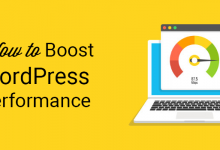UX designers have been focused on the look and feel of products since the early days of computing. However, the user experience is about more than just how a product looks; it’s also about how it works. A well-designed UI should be intuitive and easy to use, but a great UI can only take a product so far. To truly excel, a product must also have a great user experience.
User experience (UX) is all about how a user interacts with a product or service. It encompasses everything from the initial purchase decision to post-purchase support and everything in between. A good UX is essential for any product that wants to be successful.
Table of Contents
How Important is UX?
As global consumers, we are pickier than ever before. Unlike earlier generations, we have more information symmetry thanks to the world wide web and the proliferation of the internet economy. E-commerce is growing rapidly, and in the face of intense competition, even the slightest lift in user experience can help you to stay ahead of competitors. User experience is no longer a nice-to-have; it’s a must-have in today’s market.
Companies that focus on creating a positive customer experience (UX) see a lower cost of customer acquisition, lower support costs, and increased customer satisfaction and loyalty. Good UX is not only good for business—it’s also good for the bottom line. A study by Forrester found that “companies that invest in UX outperform their competitors financially by as much as 202%.”
Simply put, happy customers spend more money. A study by Harvard Business School found that a 5% increase in customer retention can lead to a 95% increase in profitability. And it makes sense—if customers are satisfied with their experience, they’re more likely to come back and buy again.
Creating a great UX doesn’t have to be complicated or expensive. Sometimes, small changes can have a big impact. For example, changing the color of a CTA button from green to red can increase conversion rates by 21%. Or adding live chat to your website can increase conversion rates by 38%.
UX Process and Methodology
UX development is a complex work that consists of several key stages. It’s best not to ignore them, as any mistakes can be costly.
Step 1: User Research
User research is an essential part of creating a good user experience. UX researchers must be mindful of the differing opinions and perceptions of what constitutes a good user experience. Research should be conducted on the target users to learn from their perspectives.
User perception of a good user experience varies across demographics such as age, education, nationality, etc. It is important to involve the correct users in your research. Below are some of the most commonly used research methods in UX:
⦁ User interviews are a great way to get feedback on your product or service. You can interview users one-on-one or in a group setting.
⦁ User surveys are another popular research method. They can be administered online or in person. Surveys allow you to collect data from a large number of people quickly and efficiently.
⦁ Observing users as they use your product or service can give you insights that you would not be able to get from simply asking them questions.
⦁ Usability testing allows you to measure how well users can complete specific tasks using your product or service.
Step 2: Research-informed design
When it comes to design, many people only think about the appearance of a website or product. However, there is much more to design than just how something looks. As Steve Jobs famously said, “Design is not just what it looks like and feels like; the design is how it works.” UX design encompasses everything from information architecture and visual design to interaction design and content strategy. And it all starts with understanding your users. By conducting research and creating personas, storyboards, user journey maps, and ecosystem maps, you can gain a deep understanding of who your users are and what they need. With this foundation in place, you can start designing your website or product in a way that will truly meet their needs.
Step 3: Wireframing
Wireframing is the process of creating a visual guide for your product. It allows you to define the information architecture, navigation design, and interface design. Wireframes have become relatively cheap and easy to create with many tools and applications available online. The most important advantage of wireframing is that it provides an early version of the product for you to review with your internal and external stakeholders. Adjustments can be made easily to the wireframes before moving on to the more complicated process of technical development. You can also create paper wireframes, low-fidelity wireframes, or high-fidelity wireframes depending on your needs.
Step 4: Prototype
A prototype is an early sample, model, or release of a product built to test a concept or process. It is the first stage in a product’s development cycle and resembles the closest version of your outcome. Creating a prototype allows UX researchers to identify any potential flaws, errors, or inconsistencies in the overall design and experience before it is converted to the actual version by the development team. By testing the prototype with users, researchers can gather feedback and make necessary changes to improve the product before it is released to the market. This saves time and resources in the long run, as it is much easier to make changes to a prototype than it is to make changes to a finished product. In addition, testing a prototype with users can help to ensure that the final product meets their needs and expectations. Ultimately, prototypes play an essential role in the development of any new product or website.
Step 5: Testing
User testing is an important part of the design process for any e-commerce company. It allows designers to validate the design flow and user experience, and to identify any areas that need improvement. In some cases, user testing may make up a large portion of the daily routine for UX researchers. This type of testing is typically conducted with a small group of users to get feedback about the product. Usability testing helps to ensure that the product is easy to use and enjoyable for the customer.
Heuristic evaluation is another method that can be used to assess the usability of a website or product. In this type of evaluation, experts review the website or product according to a set of common heuristics. This provides designers with valuable feedback about any areas that do not meet the common standards for usability. By conducting user testing and heuristic evaluation, designers can work to improve the overall user experience for their products.
Step 6: Implementation and Launch
After user testing, the validated prototype can finally be converted into an actual product for UAT Testing before an official launch. However, the role of a UX researcher does not end here. Research activities should continue to monitor the user experience performance of the website or product through suitable key performance indicators (KPI) or metrics to identify the area of improvement through user testing and propose new features to be implemented taking into account user recommendations and observe the industry trends, as well as benchmark against the competitors.
In this way, a UX researcher can ensure that the website or product provides optimal user experience to visitors and users alike, as well as keep up with the latest industry trends. Consequently, this will help increase web traffic and conversions, as well as reduce churn rate and improve customer satisfaction levels.
Follow TodayTechnology for more!








